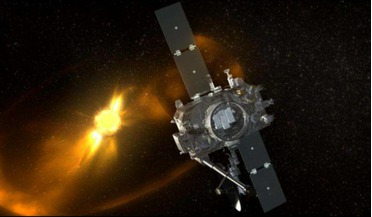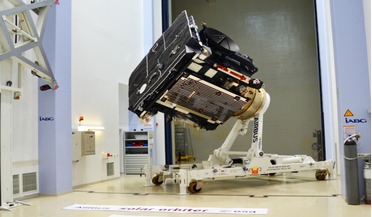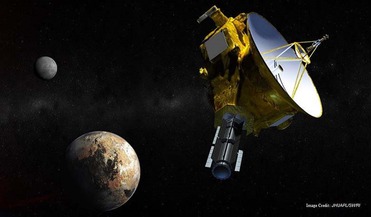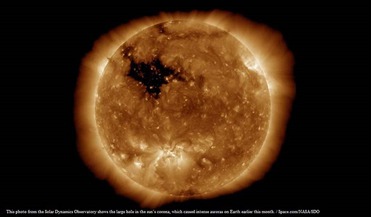 25 September 2015
67P/Churyumov-Gerasimenko’s Imhotep region: conditions change rapidly on comet’s surface
25 September 2015
67P/Churyumov-Gerasimenko’s Imhotep region: conditions change rapidly on comet’s surface
... that such extreme, rapid changes were not originally predicted by computer models as the comet approached perihelion (the point in its orbit when its closest to the sun). Whatever forces are at work on 67P/Churyumov-Gerasimenko – we must still find...
 23 August 2016
NASA Makes Contact with STEREO-B Spacecraft
23 August 2016
NASA Makes Contact with STEREO-B Spacecraft
... unexpected. NASA resumed efforts to contact STEREO-B after it had moved further away from the sun and sun radio interference could no longer impede signals. The lines of communication to both STEREO spacecraft—Ahead in red and Behind in blue—are...
 30 October 2019
Solar Orbiter ready for launch transfer
30 October 2019
Solar Orbiter ready for launch transfer
...to Cape Canaveral in Florida, USA, in preparations for launch. Solar Orbiter will perform a close-up study of our Sun and the Sun-Earth connection to better understand the behaviour of the star on which all life on Earth depends. At its closest point...
 11 August 2015
Comet 67P/Churyumov-Gerasimenko puts on a show as captured by Rosetta camera OSIRIS
11 August 2015
Comet 67P/Churyumov-Gerasimenko puts on a show as captured by Rosetta camera OSIRIS
... a while now that such emissions occur on comets – especially at and after perihelion (the point in orbit at which an object such as a comet is closest to the sun), this is the first time we are seeing this occur with such stunning clarity. It’s just...
 07 July 2015
New Horizons sees reddish brown Pluto: problems of perception in space
07 July 2015
New Horizons sees reddish brown Pluto: problems of perception in space
..., in most of our astronomy textbooks, Pluto was either blue or gray. We assumed, instinctively, than an object so far from the Sun couldn’t possibly look any different – and such assumptions, in fact, have colored (pun intended) a lot of theories...
 17 October 2015
Photos released of large hole in sun’s corona
17 October 2015
Photos released of large hole in sun’s corona
... Centre on Wednesday forecast continued activity through Friday, though at a lower level, as the hole in the corona moved west across the sun. Sky-watchers hit the Internet with their photos, of course, from as far south as Northern Ireland, Denmark...